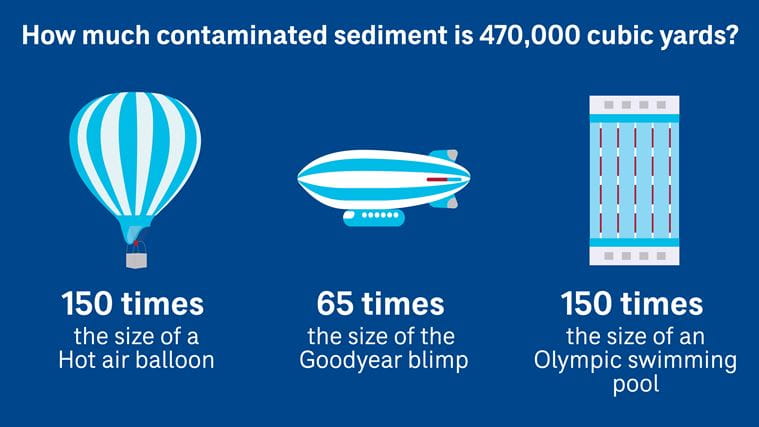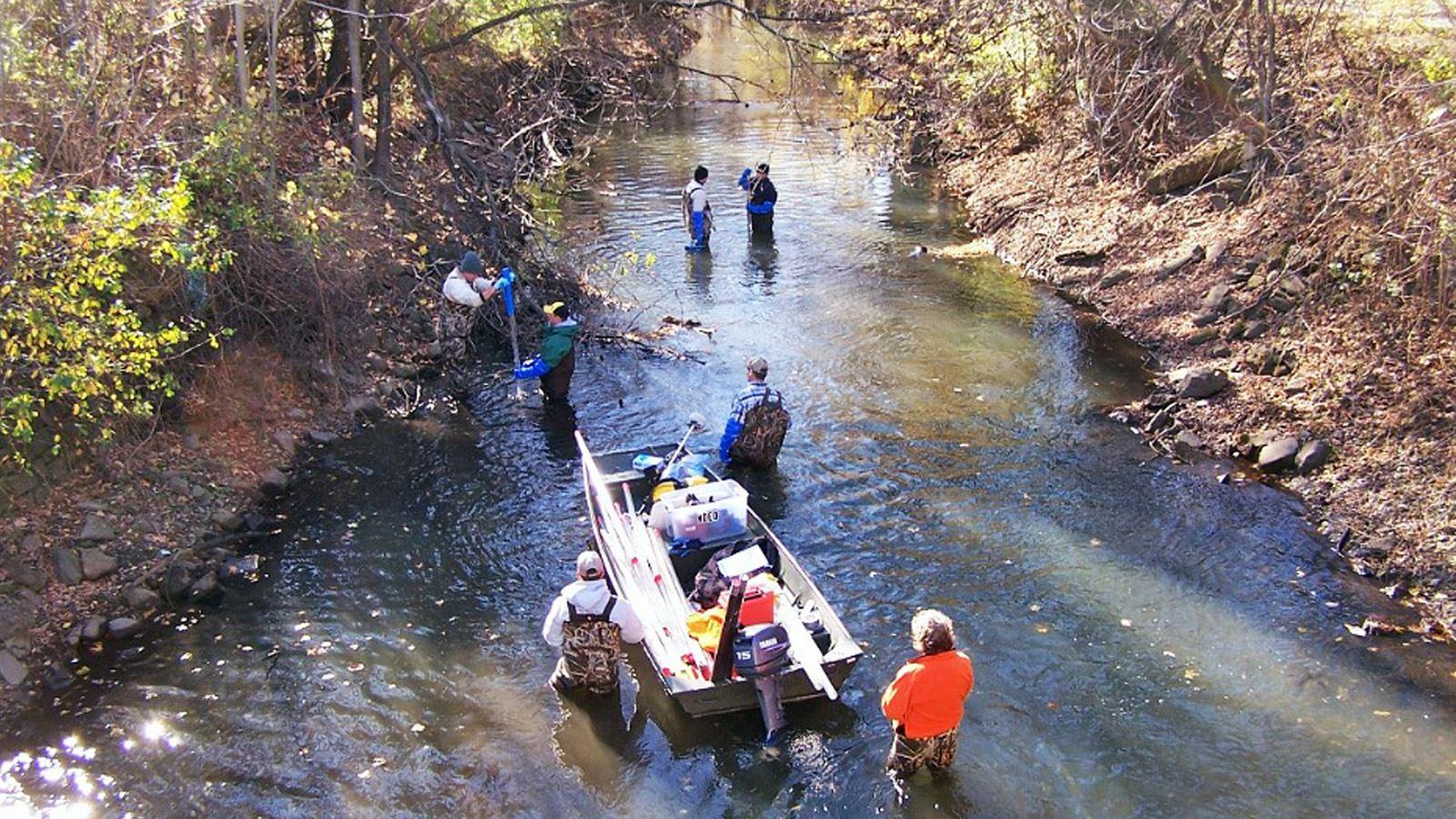Restoring the Kalamazoo River Watershed
The Kalamazoo River is a vital waterway that drains over 2,000 square miles of land as it flows for 150 miles on its way to Lake Michigan. The Kalamazoo’s watershed was home to a robust paper manufacturing industry for much of the 20th century, but this industrial growth came at a large environmental cost: the disposal of thousands of pounds of polychlorinated biphenyls (PCBs) from paper recycling mills. PCBs were banned in late 1970 as a probable human carcinogen. In 1990, the U.S. Environmental Protection Agency (EPA) declared an 80-mile stretch of the river a Superfund site, encompassing “the area from Morrow Dam to Lake Michigan, paper mill properties, riverbanks and floodplains, and a 3-mile stretch of Portage Creek.”
For more than 25 years, CDM Smith has supported the state of Michigan on nearly every facet of the cleanup of the Kalamazoo River, Portage Creek and the related sites, in an effort presently overseen by EPA. The CDM Smith team brings an array of technical expertise to support the cleanup project, including senior experts in human health and ecological risk assessment, landfill compliance and monitoring, stream morphology, and emerging contaminants. Many CDM Smith technical experts have been dedicated to the project for many years, achieving a vast knowledge of the project site and the many technical challenges it entails.
Accordingly, as contaminated sediments discipline leader Keegan Roberts explains, “The value we bring to the project is our ability to theorize, develop and implement programs of activities to advance the state’s priorities and objectives. We strategize about how best to serve the state and work hand-in-hand with our clients.”
The project is massive in scope. Since 1998, according to EPA, the Superfund effort has “removed nearly 470,000 cubic yards of contaminated material from the site, cleaned up and restored twelve miles of the Kalamazoo River and its banks, and capped 82 acres worth of contaminated material to lock it away.”

Given the complex nature of the site and the environmental hazards involved, CDM Smith experts are routinely faced with challenges that require their most innovative thinking:
-
- Seven, century-old, dams have been deteriorating along the contaminated stretch of the river, each one acting as a sediment trap and threatening a major PCB release in the event of failure. CDM Smith has worked closely with state, federal and local stakeholders to support the removal of these dams, providing technical resources to support remedial decision-making.
-
- Long term monitoring at the site requires the sacrificial collection of smallmouth bass, which is the primary sportfish sought after by anglers in the river and which the state seeks to conserve and protect. CDM Smith is working to identify, develop, and ultimately implement the use of passive samplers, an innovative sampling technique that closely replicates how smallmouth bass uptake contaminants from the river. Passive samplers will provide the data necessary to continue long term monitoring at the site while conserving and protecting the smallmouth bass population.
- Long term monitoring at the site requires the sacrificial collection of smallmouth bass, which is the primary sportfish sought after by anglers in the river and which the state seeks to conserve and protect. CDM Smith is working to identify, develop, and ultimately implement the use of passive samplers, an innovative sampling technique that closely replicates how smallmouth bass uptake contaminants from the river. Passive samplers will provide the data necessary to continue long term monitoring at the site while conserving and protecting the smallmouth bass population.
-
- The available analytical and statistical methodology for cost-effectively detecting and quantifying PCBs in soil and sediment have evolved considerably since the start of this project. CDM Smith has developed an advanced statistical approach to compare temporally-spaced PCB soil results, and an analytical chemistry program to assess the most appropriate methods for PCB quantification in the laboratory setting. This effort will help ensure that the most accurate technologies are used to assess the extent of contamination on the site and will better inform decision-making to move the effort forward.
The value we bring is our ability to theorize, develop and implement programs of activities to advance the state’s priorities and objectives.
For CDM Smith staff, the opportunity to work on the Kalamazoo River project is a chance to flex their technical skills, apply lessons learned from around the country to support the state of Michigan, and support the cleanup of a watershed with a bright future. The team had the recent opportunity to step up and assist with a sampling approach as part of a major remedial action carried out by EPA. They were able to apply lessons learned from the Portland Harbor Superfund site and other sediment megasites to help advance the work. This effort was noted as a significant milestone in aligning the interests of the client with EPA’s interests as the lead regulatory agency, and CDM Smith sediment sleuths were established as key technical contributors at the site.
Nearly 30 years into the project, the team is deeply invested in seeing this cleanup through to completion. Humbled to be supporting the state of Michigan in its endeavor to ensure an effective cleanup of the Kalamazoo River, our experts are protecting vital ecosystems and public health of the surrounding communities, too.

We strategize about how best to serve the state of Michigan and work hand in hand with our clients.









